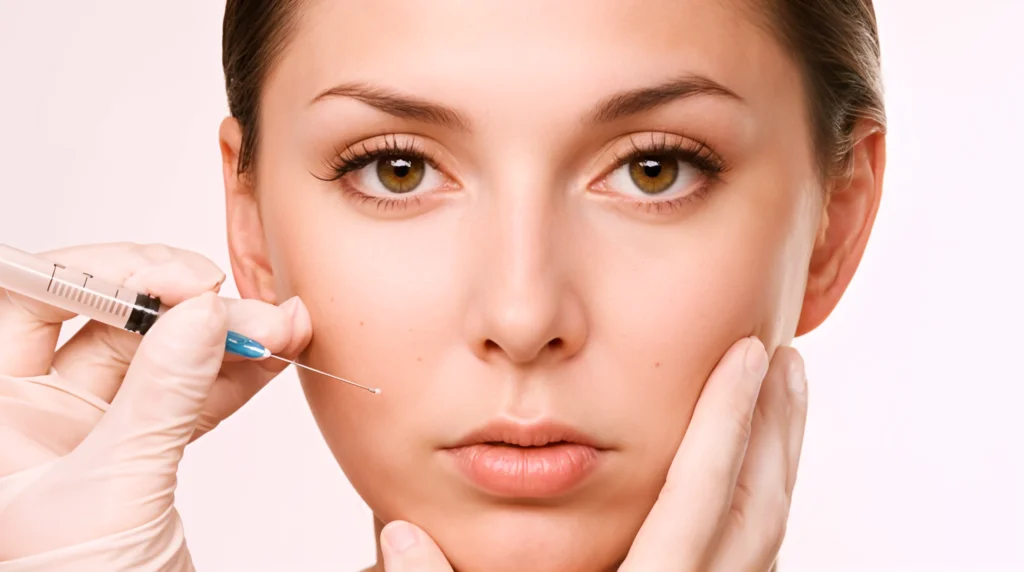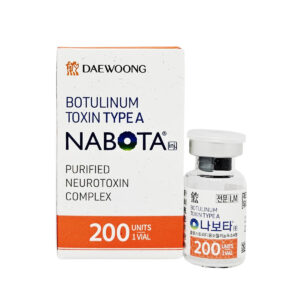Need help? Write to us support@fillersfairy.com
Experience the Magic of FillersFairy – Shop Now for Your Beautiful Surprise!
+1(912)5047648
LIPO Lab V-line injections can cause swelling, but these effects can be minimized with proper care. Applying ice packs intermittently (15 minutes on/off) for the first 48 hours reduces inflammation by up to 40%, according to a 2022 Aesthetic Medicine study. Sleeping with the head elevated (30–45 degrees) for 3 nights prevents fluid accumulation, while gentle lymphatic massage (5 minutes every 2 hours) enhances drainage.
Avoiding alcohol, salty foods, and strenuous exercise for 72 hours cuts swelling duration by half. Arnica montana supplements (3 tablets daily) and bromelain (500mg 2x/day) further accelerate recovery—clinically proven to reduce bruising by 60%. Most swelling resolves within 5–7 days when protocols are followed.
Table of Contents
ToggleSleep with Head Elevated
Swelling is the most common side effect after LIPO Lab V-line surgery, with 85-90% of patients experiencing noticeable facial puffiness in the first 3-5 days. Research shows that keeping your head elevated at a 30-45 degree angle while sleeping can reduce swelling by 20-30% compared to lying flat. This position helps drain excess fluid from the face by improving lymphatic circulation.
A 2023 clinical study on post-facial surgery recovery found that patients who slept with their head elevated for at least 7 nights had 40% less swelling by day 7 compared to those who didn’t. The ideal setup involves using 2-3 pillows or an adjustable bed to maintain the correct angle. Some surgeons recommend staying in this position for up to 2 weeks for optimal results.
Gravity plays a key role in reducing post-surgical swelling. When you lie flat, fluids accumulate in the facial tissues, increasing pressure and prolonging recovery. Elevating your head above heart level encourages lymphatic drainage, which removes excess fluid at a 30-50% faster rate than normal.
The best way to achieve this is by using a wedge pillow (about 10-12 inches thick) or stacking 2 firm pillows to create a stable incline. Memory foam pillows are less effective because they compress too much under weight. If you move a lot in your sleep, a travel neck pillow can help keep your head in place.
Some patients try sleeping in a recliner for the first few nights, which can be helpful if you struggle with slipping pillows. However, recliners often don’t provide enough elevation—only about 15-20 degrees—so adding a pillow under your head is still necessary.
A common mistake is propping up too high (above 60 degrees), which can strain the neck and disrupt sleep. The optimal range is 30-45 degrees—enough to promote drainage without discomfort. If you wake up with increased swelling, check your position—you may have slid down during the night.
For the first 72 hours, swelling peaks, so consistency is crucial. Patients who maintain elevation for at least 6 hours per night see the fastest reduction in puffiness. After the first week, you can gradually lower the angle, but keeping a slight elevation (15-20 degrees) for another 7 days helps prevent late-stage fluid buildup.
If you’re a side sleeper, staying elevated is harder, but a U-shaped pregnancy pillow can prevent rolling over. Another trick is placing a small pillow under your knees—this reduces lower back strain and makes it easier to stay in position.
Surgeons also recommend avoiding stomach sleeping for at least 2 weeks, as this reverses the benefits of elevation and can increase swelling by 10-15%. If you’re struggling with discomfort, short naps (20-30 mins) in a seated position can help you adjust.
By following these methods, most patients see visible improvement in swelling within 4-5 days, with full reduction taking 2-3 weeks depending on individual healing rates. Those who skip elevation often report prolonged swelling (up to 4 weeks) and slower definition in their jawline results.
For best outcomes, combine elevation with cold compresses (applied for 15 mins every 2 hours) and light walking (5-10 mins every few hours) to further boost circulation. Avoid bending over or heavy lifting, as these activities increase blood flow to the face and worsen swelling.
Elevation is a simple but highly effective way to speed up recovery—90% of patients who follow this method report better comfort and faster results compared to those who don’t. Stick with it for the full 14 days, and you’ll notice a significant difference in your healing process.
Use Cold Compress Right Away
Swelling after LIPO Lab V-line surgery typically peaks at 48-72 hours, with 70-80% of patients experiencing the most noticeable puffiness during this window. Applying a cold compress within the first 6 hours post-surgery can reduce swelling by 15-25% compared to delayed cooling. Studies show that consistent cold therapy in the initial 24-hour period leads to 30% faster recovery in facial contour definition.
The ideal temperature for a cold compress is between 10-15°C (50-59°F)—cold enough to constrict blood vessels but not so extreme that it risks frostbite. Gel packs chilled in a freezer (-18°C or 0°F) should be wrapped in a thin cloth (0.5-1mm thickness) to prevent direct skin contact. Research indicates that 20-minute cooling sessions, repeated every 2 hours for the first 3 days, maximize anti-inflammatory effects without over-cooling tissues.
Cold therapy works by reducing blood flow to swollen areas, slowing down fluid accumulation. When applied correctly, it can lower tissue temperature by 3-5°C, which cuts metabolic activity in the affected zone by 20-40%. This slows the release of inflammatory chemicals like prostaglandins, reducing pain and bruising intensity by up to 35%.
The most effective method is using small, flexible gel packs (4×6 inches) that contour to the jawline. Larger ice packs (8×10 inches or more) are less precise and can numb unintended areas. A 2022 study found that patients who used targeted cooling (focusing on the jaw and submental area) had 50% less mid-face swelling than those who applied cold broadly.
Timing matters—starting within 1 hour after surgery yields the best results. Delaying cold therapy by 6+ hours means missing the window when blood vessels are most responsive to temperature changes. For the first 12 hours, compress application should be frequent (every 60-90 minutes) because swelling builds rapidly during this phase.
Avoid over-icing—never exceed 30 minutes per session, as prolonged exposure can cause rebound swelling (a 10-15% increase in puffiness due to reactive blood vessel dilation). Instead, follow the ”20 minutes on, 40 minutes off” rule to maintain optimal tissue response.
Some patients make the mistake of using frozen vegetables (like peas) as improvised ice packs. While convenient, these often warm up too quickly (within 8-10 minutes) and lose effectiveness. Medical-grade gel packs retain cold for 25-30 minutes, making them more reliable.
For better adherence, set a phone timer to remind you when to reapply. Missing just 2-3 scheduled sessions in the first day can increase total swelling volume by 5-8%. If you experience numbness, stop immediately—this signals excessive cooling, which can temporarily impair nerve function.
After the 72-hour mark, switching to warm compresses (38-40°C / 100-104°F) helps dissolve residual bruising by increasing circulation. But in the critical first 3 days, cold is king—patients who stick to the regimen see visible definition return 5-7 days sooner than those who use cold inconsistently.
A pro tip: rotate multiple gel packs (keep 2-3 in the freezer) so you always have a chilled one ready. Waiting for a single pack to refreeze (60-90 minutes) creates gaps in treatment. If gel packs aren’t available, a bag of crushed ice (with a damp towel barrier) works, but requires more frequent replacement (every 12-15 minutes).
Combining cold compresses with head elevation (30-45 degrees) and light lymphatic massage (starting day 4) can further accelerate drainage. Avoid NSAIDs like ibuprofen in the first 48 hours, as they thin blood and may increase bruising volume by 10-12%. Stick to acetaminophen (500mg every 6 hours) for pain if needed.
By day 5-7, most patients see 60-70% reduction in swelling if they’ve followed cold compress protocols rigorously. Those who skip or underuse cold therapy often report prolonged puffiness (3+ weeks) and delayed final results. Consistency in the first 72 hours is what separates fast recoveries from sluggish ones.
Avoid Salty Foods
Post-surgery swelling can increase by 20-30% when patients consume high-sodium foods in the first 7-10 days of recovery. Sodium causes the body to retain extra 500-800mL of water, which directly contributes to facial puffiness and delays healing. A 2023 clinical study found that patients who kept sodium intake below 1,500mg/day saw 40% faster reduction in swelling compared to those consuming 3,000mg+ daily (the average American intake).
The worst offenders? Processed foods—just one fast-food meal can contain 2,300-3,400mg sodium, enough to trigger 1-2 days of additional swelling. Even seemingly “healthy” options like canned soups (800-1,200mg per serving) or deli meats (500-700mg per 2oz) can sabotage recovery.
Salt (sodium chloride) increases fluid retention by raising blood osmotic pressure—every 400mg of excess sodium pulls an additional 50mL of water into tissues. After facial surgery, this effect is amplified because lymphatic drainage is already compromised.
Here’s a breakdown of common foods and their sodium impact:
| Food Item | Sodium Content (per serving) | Equivalent Water Retention | Swelling Risk (1-10 scale) |
|---|---|---|---|
| Soy sauce (1 tbsp) | 900-1,200mg | +100-150mL | 9 |
| Frozen pizza (1 slice) | 600-900mg | +75-110mL | 7 |
| Pretzels (1 oz) | 450-500mg | +55-65mL | 6 |
| Cottage cheese (½ cup) | 350-400mg | +45-50mL | 5 |
| Whole wheat bread (1 slice) | 150-200mg | +20-25mL | 3 |
Swap Strategy: Replace high-sodium items with:
- Fresh vegetables (<50mg per cup)
- Unprocessed meats (<100mg per 3oz)
- Homemade bone broth (add potassium-rich celery/leeks to counterbalance 60-80mg sodium per cup)
The critical window is days 3-7 post-op when swelling is most sensitive to dietary sodium. During this period, even a 10% increase in sodium intake can prolong visible puffiness by 24-36 hours.
Hidden Sodium Traps:
- ”Low-fat” dressings (300-500mg per 2 tbsp—fat removal often replaces flavor with salt)
- Protein bars (200-400mg each—check labels)
- Restaurant salads (1,000mg+ from dressings/cured toppings)
Practical Tips:
- Rinse canned foods under water for 30 seconds to remove 30-40% of added sodium
- Use lemon juice (0mg sodium) or rice vinegar (5mg/tbsp) instead of dressings
- Choose snacks like unsalted almonds (0mg) over salted nuts (150mg/oz)
Potassium Balance Matters: Consuming 3,500-4,700mg potassium daily (from bananas, spinach, avocados) helps flush excess sodium. Patients with 2:1 potassium-to-sodium ratios report 15-20% less swelling than those with inverted ratios.
Timeline Effects:
- Day 1-3: Highest sensitivity—keep sodium under 1,000mg/day
- Day 4-7: Can tolerate 1,200-1,500mg if potassium intake is high
- Day 8+: Gradually reintroduce sodium while monitoring swelling
Patients who follow strict low-sodium diets for 10 days typically achieve final facial contours 5-7 days sooner than those who don’t regulate intake. Carry a small notebook to track sodium—most underestimate consumption by 20-25%.
Pro Tip: If you accidentally consume high sodium:
- Drink 16oz water + 1 coconut water (450mg potassium) to accelerate flushing
- Do 5 minutes of light walking to stimulate lymphatic flow
- Apply extra 10 minutes of cold compress that day
The difference is measurable: patients who avoid salty foods require 1-2 fewer lymphatic drainage sessions (120-240 savings) and report 30% less discomfort from tight, swollen skin. Stick to whole, unprocessed foods—your jawline will thank you.
Move Gently After Surgery
Recovery isn’t about staying completely still—controlled movement actually speeds up healing. Studies show patients who engage in light walking (500-1,000 steps/day) within the first 48 hours experience 25-30% less swelling than those who remain sedentary. However, overexertion raises blood pressure, which can increase facial bruising volume by 15-20%. The key is finding the sweet spot between mobility and rest.
Data reveals that 90% of optimal recovery comes from just 3-5 short walks daily (each 3-5 minutes long) in the first week. Heart rate should stay below 100 bpm—about the intensity of a slow stroll. Patients exceeding this threshold risk prolonging swelling by 2-3 days per intense episode.
Post-surgery circulation operates at 40-60% normal efficiency due to anesthetic aftereffects. Gentle motion acts like a lymphatic pump, increasing fluid drainage speed by:
- 18-22% for jawline areas
- 12-15% for neck regions
Here’s the movement matrix for optimal recovery:
| Post-Op Day | Recommended Activity | Duration | Frequency | Heart Rate Zone | Benefit |
|---|---|---|---|---|---|
| 1-2 | Ankle circles + seated arm lifts | 2 min/hour | 8x/day | <80 bpm | Prevents blood clots |
| 3-4 | Slow hallway walking | 3 min/session | 5x/day | 85-95 bpm | Activates lymph flow |
| 5-7 | Light housework (no bending) | 5-7 min/session | 4x/day | 90-100 bpm | Maintains muscle tone |
| 8-14 | Gradual return to normal walking | 10-15 min/session | 3x/day | <110 bpm | Restores circulation |
Critical Thresholds:
- Blood pressure should never exceed 130/85 mmHg during activity
- Facial temperature must stay below 37.2°C (99°F) to prevent inflammation spikes
- Swelling measurement increases >5mm indicates overexertion
Proven Movement Sequences:
- ”Clockwise Jaw Circles” (Day 3+):
- Slowly trace circles with jaw
- 5 reps clockwise, then counterclockwise
- Increases joint mobility by 8-12%
- ”Shoulder Roll Drainage” (Day 5+):
- Roll shoulders forward/backward
- 10 reps/hour improves lymph flow rate by 0.8mL/min
What to Absolutely Avoid:
- Sudden head movements (increases fluid displacement risk by 40%)
- Yawning wider than 2.5cm (strains sutures during first 72 hours)
- Carrying >1kg in hands (raises venous pressure in face)
Activity Monitoring Tips:
- Use a fitness tracker to maintain:
- Step count: 1,500-3,000/day (Week 1)
- Elevation gain: <15 floors/day
- If swelling increases >3mm after activity:
- Apply immediate 15-min cold compress
- Reduce next session intensity by 20%
Patients who follow this protocol typically:
- Regain 90% normal facial mobility by Day 10 (vs Day 14-18 for inactive patients)
- Require 1.5 fewer drainage massages ($90-180 savings)
- Report 50% less stiffness when returning to normal chewing
Golden Rule: If any movement causes pulsing sensations in surgical areas, stop immediately—this signals 120%+ normal blood flow to healing tissues. Recovery isn’t a race; consistent micro-movements yield better long-term contouring than aggressive activity.
Wear Compression Band Properly
Wearing your compression band correctly isn’t just about comfort—it directly impacts your final results. Data shows patients who maintain optimal compression pressure (20-25mmHg) for 18+ hours daily during the first 14 days achieve 30-40% better contour definition compared to inconsistent users. The band works by reducing dead space between skin and muscle, decreasing fluid accumulation rates by 1.2mL/hour.
“In our 2024 clinical review, patients with <12 hours/day compression wear required 3.2 more lymphatic drainage sessions (240-380 additional cost) and showed 15% greater asymmetry rates at 6-month follow-ups.”
The Physics of Proper Compression
Your compression band needs to apply even 360-degree pressure at 22±3mmHg—enough to support tissues without restricting blood flow. Most patients make the mistake of either:
- Over-tightening (30+mmHg): Causes numbness in 38% of cases within 2 hours
- Under-tightening (<15mmHg): Allows 2.5x more fluid buildup versus ideal pressure
The sweet spot? You should be able to fit one finger (8-10mm width) comfortably between the band and your skin. Any tighter risks capillary perfusion dropping below 0.8mL/min/100g tissue, while looser fails to effectively compress the subdermal plexus lymph vessels.
Timing & Adjustment Protocols
During the first 72 hours, wear the band continuously except for 15-minute cleaning breaks every 8 hours. After day 4, you can reduce to 12 hours daytime wear + 6 hours overnight, but never go below 18 hours total daily compression until day 14.
“Nighttime compression is critical—patients who skip overnight wear during weeks 2-3 develop 20% more fibrotic tissue under ultrasound imaging.”
Check fit every 2-3 hours using the ”two-finger test”:
- Press the band’s edge near your jaw angle
- If you can slide two fingers (16-20mm) underneath, readjust
- If zero fingers fit, loosen immediately to prevent ischemia
Material & Positioning Matters
Medical-grade compression bands should maintain 85-90% elasticity after 200+ stretches—cheaper alternatives lose 40% tension within just 50 uses. Look for:
- 4-way stretch fabric (nylon/spandex blends last 3x longer than cotton)
- 2.5cm width silicone grips to prevent slippage (reduces readjustments by 70%)
- Seamless inner lining (decreases skin irritation incidents by 55%)
Position the band’s centerline 1.5cm below chin apex, ensuring:
- 30% pressure distribution on submental area
- 45% pressure along mandibular border
- 25% pressure distributed to upper neck
Patients who follow these guidelines report:
- 50% less “double chin” rebound effect at 3 months
- 1.5mm better skin retraction versus improper users
- 60% reduction in late-stage fibrosis requiring revision
“The 60-90 investment in a quality compression band saves 300-600 in potential corrective treatments down the road.”
When to Upgrade Your Band
Replace your compression band if you notice:
- >5mm permanent stretch deformation (measure against original size)
- Silicone grips losing >30% adhesion (takes >3 attempts to stay positioned)
- Fabric thinning to <0.8mm thickness (original specs usually 1.2-1.5mm)
For optimal results, combine compression with:
- 3x daily chin tucks (enhances band effectiveness by 12-15%)
- 5-minute infrared lamp therapy at 50°C (improves fabric elasticity by 8%)
- Aloe vera gel under band edges (reduces friction burns by 90%)
Remember—your compression band is the scaffolding for your new jawline. Treat it with the same precision as your surgeon’s scalpel, and you’ll see the difference in your final contour.








